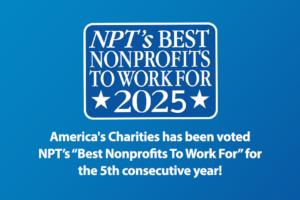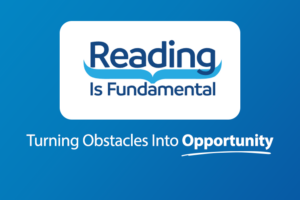Steve Delfin | January 13, 2014
The Combined Federal Campaign is an Unrealized Asset
In last week’s Washington Post Federal Diary column by Joe Davidson, “Low morale of federal employees is putting a crimp in charitable giving,” I was quoted as saying,
“Federal employees are givers. Service is in their DNA. But until the CFC [Combined Federal Campaign] is integrated into broader federal employee engagement, it will be a siloed activity, driven by compliance and regulations, and not realize its true potential as a way to positively engage employees, raise money for charities and … lessen the burden of government.”
The quote is accurate, but didn’t get into the specifics of why the CFC is an unrealized asset for a more engaged federal workforce.
The Problem
You see, the CFC – which is the Federal Government’s employee workplace payroll giving program – used to raise as much as $280 million annually for charitable organizations. It was the single largest workplace giving program in the country leveraging $900 million to $1.5 billion in funds for charities. But in recent years it has been on the decline. When the 2013 CFC ends this Wednesday, January 15, it looks like it will raise one-third less than it did in its heyday just a few years ago. As the Post cited, federal workforce morale is part of the problem, but I believe the CFC’s systemic problem is the lack of contemporary practices and innovation that connect employee workplace giving to the bigger whole of employee engagement.
There are two major reasons for this:
- OPM has very limited experience with and is disconnected from contemporary philanthropy and modern fundraising. Therefore it focuses on what it does best, ensure compliance with and create new rules and procedures to ensure donors that their dollars are reaching charities that meet CFC standards. In recent years as OPM has become increasingly focused on compliance and rules, they have also created an environment where there are fewer opportunities for employees to engage with charities they might choose to support. OPM’s created new rules making in harder, not easier, to engage Federal workforce volunteers in promoting the CFC. And they’ve served up a set of proposed new rules many of which, if implemented, would likely result in continued drops in giving.
- OPM continues to view workplace giving in a silo disconnected from broader Federal workforce employee engagement. In the private sector where workplace giving continues to grow, employee fundraising is part of a much broader employee engagement strategy linked to professional development, employer brand strategy and community relations.
Last summer OPM issued new proposed rules they said were designed to “reinvigorate” the CFC. Unfortunately the proposed changes focused on increasing OPM’s capacity to provide more regulatory and compliance oversight and more cost and administrative burden for participating charities. While there are many aspects of OPM’s proposed changes that, conceptually, have merit and we supported, virtually every organization involved with the CFC −from America’s Charities, to United Way, to Independent Sector, to other federated groups and their members such as Community Health Charities, Global Impact, Earth Share and Neighbor-to-Nation− questioned why OPM focused so heavily on rules, regulations and compliance and very little on communication, engagement, and public benefit outcomes that the CFC was originally created to achieve.
It is important to remember the CFC was created by Presidential order in 1962 “… to lessen the burdens of government and of local communities in meeting needs of human health and welfare; [and] to provide a convenient channel through which Federal public servants may contribute to these efforts…”.
OPM has lost track of this mandate and need in their zeal to do what they do best – rules, regulations, oversight and compliance.
The Solution
In addition to the CFC, America’s Charities, and many of the aforementioned charitable organizations, have experience working with private sector employers to connect employee giving with employee engagement, skills-based professional development, community affairs, and the broader spectrum of social responsibility. In fact, a recent report we published called SNAPSHOT: Trends and Strategies for Engaging Employees in Greater Giving, highlights private sector employee engagement best practices and trends driven by the growing employee expectation that their employer help them engage with and support charitable organizations.
Likewise, a 2011 Corporate Leadership Council study revealed that “performance against revenue expectations is 23 percent greater for companies with high engagement capital compared to those with low engagement capital.” In addition, a recent Gallup study estimates that “lost productivity of actively disengaged employees costs the U.S. economy between $450 billion to $550 billion annually.” Seizing the opportunity to capture these kinds of significant performance gains — or avoid staggering productivity losses — through effective employee engagement strategies simply makes sound business sense.
If OPM truly wants to “reinvigorate” the CFC, they should start by considering the following fundamentals that we see in high performing employee engagement cultures:
- Allow and encourage Federal agencies to creatively integrate CFC in their broader employee engagement and community relations efforts. This is more of a philosophical benchmark than a specific set of tactics. Currently the CFC is isolated as a once a year mandate driven by management. Lost is a connectedness to what civil service is all about – helping people, communities and the country. We can blame that on lots of things including the history of CFC as a remnant of the old top down fundraising workplace giving programs by a quest for 100% participation. The CFC has tremendous unrealized potential to “lessen the burdens of government” that can be realized by a more inclusive look at the CFC as part of a broader employee engagement and community outreach strategy. Some specific thoughts on how to accomplish that follow.
- Skills-based Volunteering: In light of the pending exodus of baby boomers and the uncertainty that now comes with federal employment, one of the challenges facing the Federal Government is talent recruitment and retention. OPM should focus on creating guidelines for federal agencies on how they can promote and use skills-based volunteerism, in helping employees gain new skills needed for career advancement or to enhance their capacity in their current role. In the private sector, many progressive employers actually use skill-based volunteering to lower their employee training and development costs. While the federal government does not provide time off for volunteering, through the use of technology the CFC could provide a platform where volunteer opportunities can be made available, and data compiling the amount of time federal employees give back to the community through volunteerism can translate back into financial support.
- Expanded Use of Technology: Currently OPM views technology primarily as a transactional tool for raising funds, not as a relationship-building tool. OPM should consider expanding the use of technology as a way to connect donors to the positive outcomes their charitable contributions help make happen. In addition to using technology to encourage employee-giving, use it to regularly provide communications throughout the year, connecting donors to the results of their giving, along with information about charities and their impact.
- Connect Federal and Military Employees to Services Provided by Charities Participating in the CFC. : At a time when the federal workforce has been furloughed, maligned, and faces continued uncertainty, the CFC should also be a means to connect low wage federal and military employees to the network of services they can tap into when they need help. Many private sector companies provide extensive Employee Assistance Programs driven primarily by their charitable partners. Even if federal agencies already have this function, why not augment it with services provided by the charities and in doing so, help educate and inform federal employees about the positive impact that CFC participating charities have. Under the Office of Personnel Management’s (OPM) auspices, the campaign did this well for many years as a result of the growth and maturation of the federal workforce. However, very little effort was made to modernize the campaign during that time. It remained an isolated, once a year fundraising event, disconnected from any broader federal workforce employee relations or engagement strategy.
Federal employees have “service” ingrained in the persona. Go to a charity walk, run or other event, look at nonprofit boards of directors, see who is coaching your kids’ soccer or little league teams. Chances are you’ll find a federal employee volunteering. Helping others is part of their DNA, and as a group they are among the most dedicated and committed charitable volunteers and donors.
OPM needs to connect the dots and understand that the CFC can and should play a role in the broader federal employee engagement social impact landscape. Giving and participation rates will rise as employees become more informed, more engaged, and more satisfied.
Steve Delfin
|
Get Resources and Insights Straight To Your Inbox
Explore More Articles
For Fifth Consecutive Year America’s Charities Named ‘Best Nonprofit To Work For’
Washington, D.C. – April 1, 2025 – America’s Charities, the nonprofit that mobilizes the power of giving as a leading provider of volunteering, workplace giving,…
Read ArticleWorkplace Fundraising + Volunteering Summit (April 2nd and 3rd, 2025)
Join us in attending this virtual summit! The America’s Charities team is joining up with other leading voices in the workplace giving space for a…
Read ArticleThe Time to Act is Now
The results of the 2024 National Assessment of Educational Progress (NAEP) are in, and the findings are, in a word, heartbreaking. This assessment serves as…
Read ArticleGet Resources and Insights Straight To Your Inbox
Receive our monthly/bi-monthly newsletter filled with information about causes, nonprofit impact, and topics important for corporate social responsibility and employee engagement professionals, including disaster response, workplace giving, matching gifts, employee assistance funds, volunteering, scholarship award program management, grantmaking, and other philanthropic initiatives.


 Steve has 30 years of experience working in and with major national and international not-for-profit organizations and socially-responsible international corporations, including a long history of engagement with and leadership around workplace giving and employee volunteerism programs.
Steve has 30 years of experience working in and with major national and international not-for-profit organizations and socially-responsible international corporations, including a long history of engagement with and leadership around workplace giving and employee volunteerism programs. 

